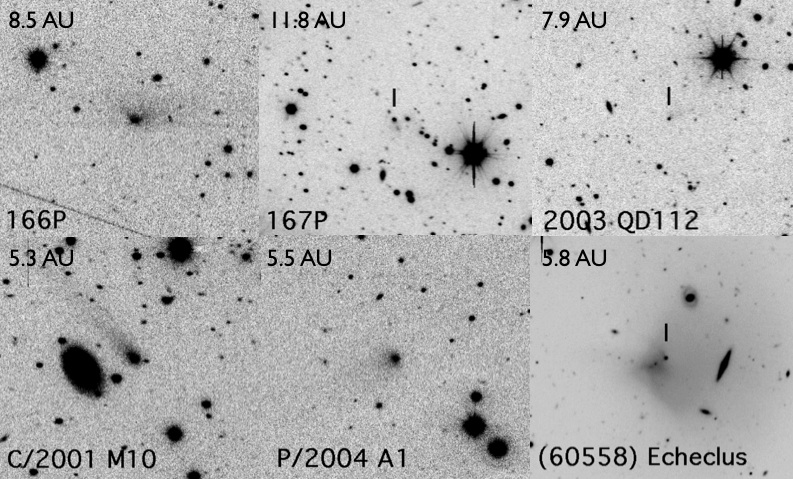

The first recognised example was Chiron (eccentricity = 0.38, perihelion distance = 8.5 AU, diameter = 200 km).

The active Centaurs are too cold for their activity to be driven by the sublimation of exposed water ice. The most likely explanation is that they outgas supervolatiles (notably carbon monoxide, CO). The CO is not freely sublimating, however. If it were, then active Centaurs would be found all the way out to the Kuiper belt, but instead they appear to be preferentially located near the orbit of Jupiter. Instead, we think that the activity is triggered by the crystallization of amorphous water ice, which requires temperatures found only inside and near the orbit of Saturn.